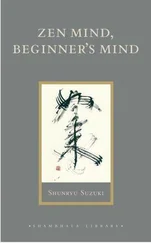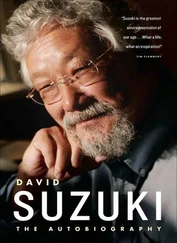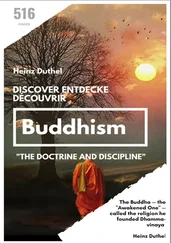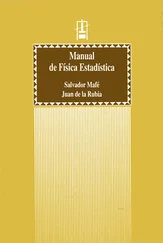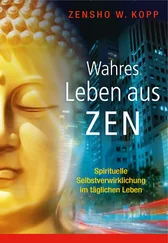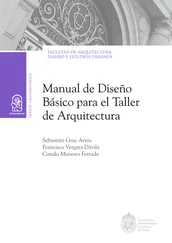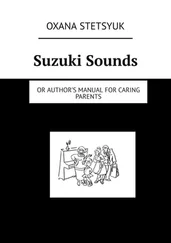Teitaro Suzuki - Manual of Zen Buddhism
Здесь есть возможность читать онлайн «Teitaro Suzuki - Manual of Zen Buddhism» весь текст электронной книги совершенно бесплатно (целиком полную версию без сокращений). В некоторых случаях можно слушать аудио, скачать через торрент в формате fb2 и присутствует краткое содержание. Жанр: Религиоведение, Религия, Руководства, на английском языке. Описание произведения, (предисловие) а так же отзывы посетителей доступны на портале библиотеки ЛибКат.
- Название:Manual of Zen Buddhism
- Автор:
- Жанр:
- Год:неизвестен
- ISBN:нет данных
- Рейтинг книги:3 / 5. Голосов: 1
-
Избранное:Добавить в избранное
- Отзывы:
-
Ваша оценка:
- 60
- 1
- 2
- 3
- 4
- 5
Manual of Zen Buddhism: краткое содержание, описание и аннотация
Предлагаем к чтению аннотацию, описание, краткое содержание или предисловие (зависит от того, что написал сам автор книги «Manual of Zen Buddhism»). Если вы не нашли необходимую информацию о книге — напишите в комментариях, мы постараемся отыскать её.
Manual of Zen Buddhism — читать онлайн бесплатно полную книгу (весь текст) целиком
Ниже представлен текст книги, разбитый по страницам. Система сохранения места последней прочитанной страницы, позволяет с удобством читать онлайн бесплатно книгу «Manual of Zen Buddhism», без необходимости каждый раз заново искать на чём Вы остановились. Поставьте закладку, и сможете в любой момент перейти на страницу, на которой закончили чтение.
Интервал:
Закладка:
2. The reason why we go through the eternal cycle of birth and death and suffer ills incident to it is our ignorance as to the source of birth and death, that is, because Mind-essence is forgotten in the midst of causal nexus which governs this world of particular objects.
This Mind-essence is variously characterized as something original, mysterious, mysteriously bright, illumining, true, perfect, clear as a jewel, etc. It is not to be confused with our empirical mind, for it is not an object of intellectual discrimination.
Ananda is asked to locate this Mind-essence. But, as his mind moves along the line of our relative experience, he fails to give a satisfactory answer. He pursues objective events which are subject to birth and death; he never reflects within himself to try to find the Mind bright and illumining which makes all his experiences possible.
3. Even the Bodhisattva cannot pick up this mysteriously transparent Essence out of a world of individual things. He cannot demonstrate its reality by means of his discerning intelligence. It is not there. But that the Essence is there is evident from the fact that the eye sees, the ear hears, and the mind thinks. Only it is not discoverable as an individual object or idea, objective or subjective; for it has no existence in the way we talk of a tree or a sun, of a virtue or a thought. On the other hand, all these objects and thoughts are in the Mind-essence, true and original and mysteriously bright. Our body and mind is possible only when thought of in connection with it.
4. Because since the beginningless past we are running after objects, not knowing where our Self is, we lose track of the Original Mind and are tormented all the time by the threatening objective world, regarding it as good or bad, true or false, agreeable or disagreeable. We are thus slaves of things and circumstances. The Buddha advises that our real position ought to be exactly the other way. Let things follow us and wait our commands. Let the true Self give directions in all our dealings with the world. Then we shall all be Tathagatas. Our body and mind will retain its original virtue bright and shining. While not moving away from this seat of enlightenment, we shall make all the worlds in the ten quarters reveal themselves even at the tip of a hair.
5. Manjusri is Manjusri; he is absolute as he is; he is neither to be asserted nor to be negated. All assertions and negations start from the truth of this absolute identity, and this is no other than the originally illuminating Mind-essence. Based on this Essence, all the conditions that make up this world of the senses are fulfilled: we see, we hear, we feel, we learn, and we think.
6. Causation belongs to a world of opposites. It cannot be applied to the originally bright and illumining Essence. Nor can one ascribe to it “spontaneous activity”, for this also presupposes the existence of an individual concrete substance of which it is an attribute. If the Essence is anything of which we can make any statements either affirmative or negative, it is no more the Essence. It is independent of all forms and ideas, and yet we cannot speak of it as not dependent on them. It is absolute Emptiness, sunyata , and for this very reason all things are possible in it.
7. The world including the mind is divisible into five Skandha (aggregates), six Pravesha (entrances), twelve Ayatana (seats), and eighteen Dhatu (kingdoms). They all come into existence when conditions are matured, and disappear when they cease. All these existences and conditions take place illusively in the Tathagata-garbha which is another name for the Mind-essence. It is the latter alone that eternally abides as Suchness bright, illumining, all-pervading, and immovable. In this Essence of eternal truth there is indeed neither going nor coming, neither becoming confused nor being enlightened, neither dying nor being born; it is absolutely unattainable and unexplainable by the intellect, for it lies beyond all the categories of thought.
8. The Tathagata-garbha is in itself thoroughly pure and all-pervading, and in it this formula holds: form is emptiness and emptiness is form. Rupam sunyata, sunyateva rupam . This being so, the Essence which is the Tathagata-garbha reveals itself in accordance with thoughts and dispositions of all beings, in response to their infinitely-varied degrees of knowledge, and also to their karma. In spite of its being involved in the evolution of a world of multiplicities, the Essence in itself never loses its original purity, brilliance or emptiness, all of which terms are synonymous.
9. The knowledge of an objective world does not come from objects, nor from the senses; nor is it mere accident; nor is it an illusion. A combination of the several conditions or factors is necessary to produce the knowledge. But mere combination is not enough. This combination must take place in the originally pure, bright, illuminating Essence, which is the source of knowledge.
When this is realized, all the worlds in the ten quarters including one's own existence are perceived as so many particles of dust, floating, rising, and disappearing like foam, in the vast emptiness of space which the one illuminative Mind-essence eternally pervades.
10. The question: When the Tathagata-garbha is in itself so pure and undefiled, how is it possible that we have this world of mountains, rivers, and all other composite forms which are subject to constant changes and transformations?
This doubt comes from not understanding the absolute nature of the purity of the Essence. For by purity is not meant relative purity, which is only possible by establishing a dualistic conception of reality. The Essence is neither in the world nor of the world, nor is it outside the world. Therefore the question, which is based on a dualistic interpretation of reality, is altogether irrelevant when applied to the nature of the Essence and its relation to the world.
Hence this remarkable statement: The Tathagata-garbha, which is mysteriously bright and illuminating as the Mind-Essence, is neither to be identified nor not to be identified [with the world]; it is at once this and not-this.
11. Yajnadatta, a citizen of Sravasti, one morning looked into the mirror and found there a face with the most charming features. He thought his own head disappeared and thereby went crazy. This story is used to illustrate the stupidity of clinging to relative knowledge which rises from the opposition of subject and object. As we cling to it as having absolute value, a world of topsyturviness comes to extend before us. The original bright and charming face is possessed by every one of us only when we realize the fact by reflecting within ourselves, instead of running after unrealities.
12. Now Ananda wants to know how to get into the palatial mansion, which he is told to be his own. He is not in possession of the key wherewith he can open the entrance door. The Buddha teaches him in this way. There are two methods to effect the entrance, both of which being complementary must be practised conjointly. The one is Samatha and the other Vipasyana. Samatha means “tranquillization” and vipasyana “contemplation”.
By Samatha the world of forms is shut out of one's consciousness so that an approach is prepared for the realization of the final stage of enlightenment. When one's mind is full of confusion and distraction, it is no fit organ for contemplation. By Vipasyana is meant that the Yogin is first to awaken the desire for enlightenment, to be firmly determined in living the life of Bodhisattvahood, and to have an illuminating idea as regards the source of the evil passions which are always ready to assert themselves in the Tathagata-garbha.
13. When this source is penetrated by means of Prajna, the entrance is effected to the inner sanctuary, where all the six senses are merged in one. Let the Prajna penetration enter through the auditory sense as was the case with Kwannon Bosatsu, and the distinctions of the six senses will thereby be effaced; that is to say, there will then take place an experience called “perfect interfusion”. The car not only hears but sees, smells, and feels. All the barriers between the Sensory functions are removed, and there is a perfect interfusion running between them; each Vijnana then functions for the others.
Читать дальшеИнтервал:
Закладка:
Похожие книги на «Manual of Zen Buddhism»
Представляем Вашему вниманию похожие книги на «Manual of Zen Buddhism» списком для выбора. Мы отобрали схожую по названию и смыслу литературу в надежде предоставить читателям больше вариантов отыскать новые, интересные, ещё непрочитанные произведения.
Обсуждение, отзывы о книге «Manual of Zen Buddhism» и просто собственные мнения читателей. Оставьте ваши комментарии, напишите, что Вы думаете о произведении, его смысле или главных героях. Укажите что конкретно понравилось, а что нет, и почему Вы так считаете.

